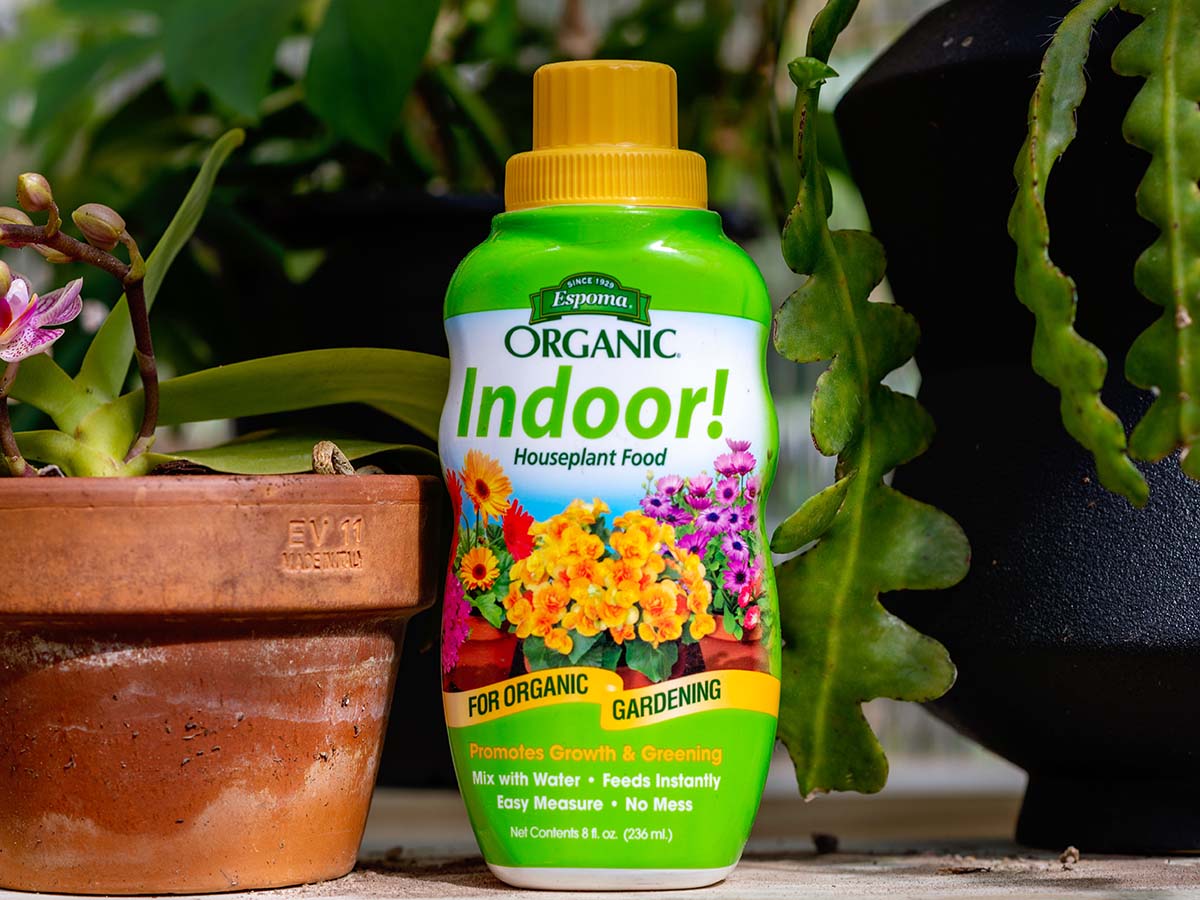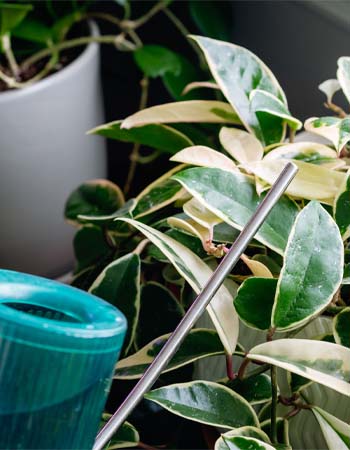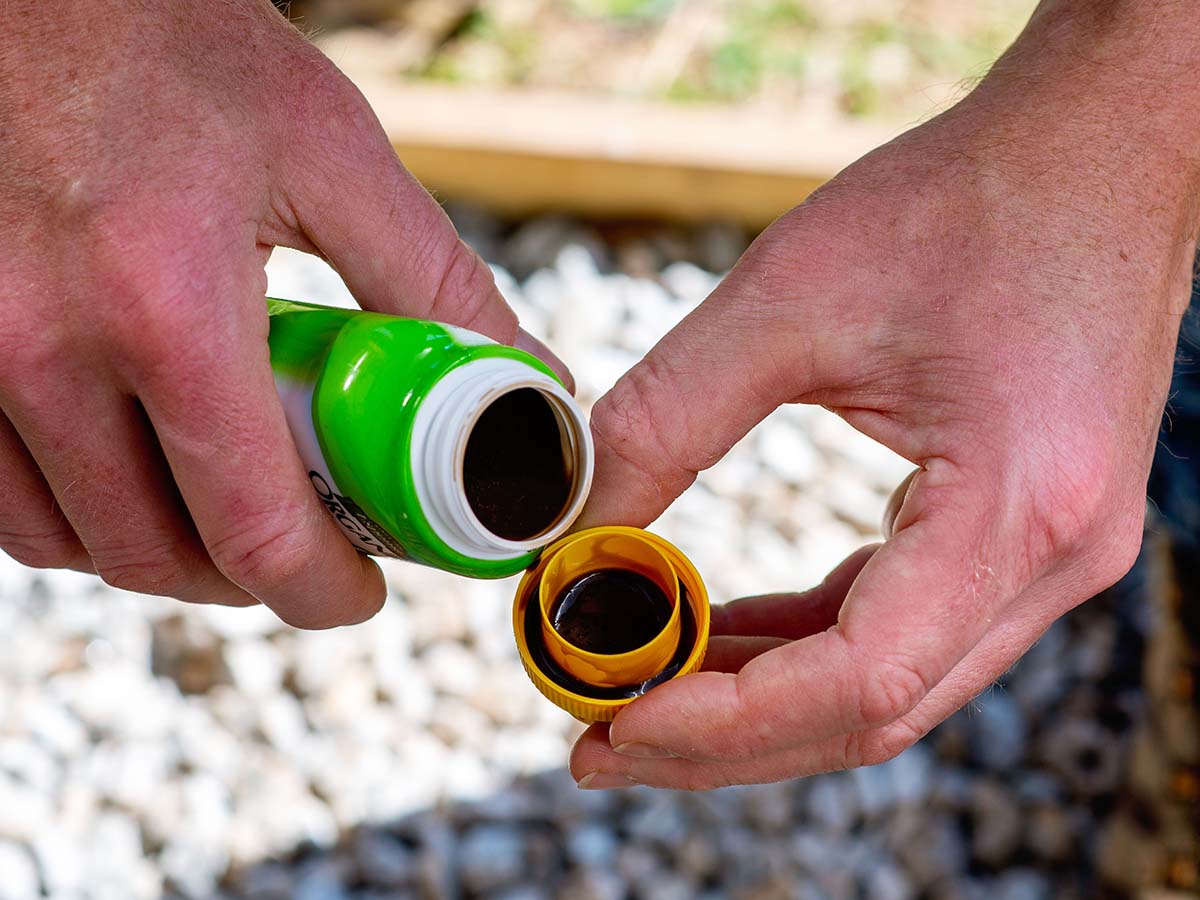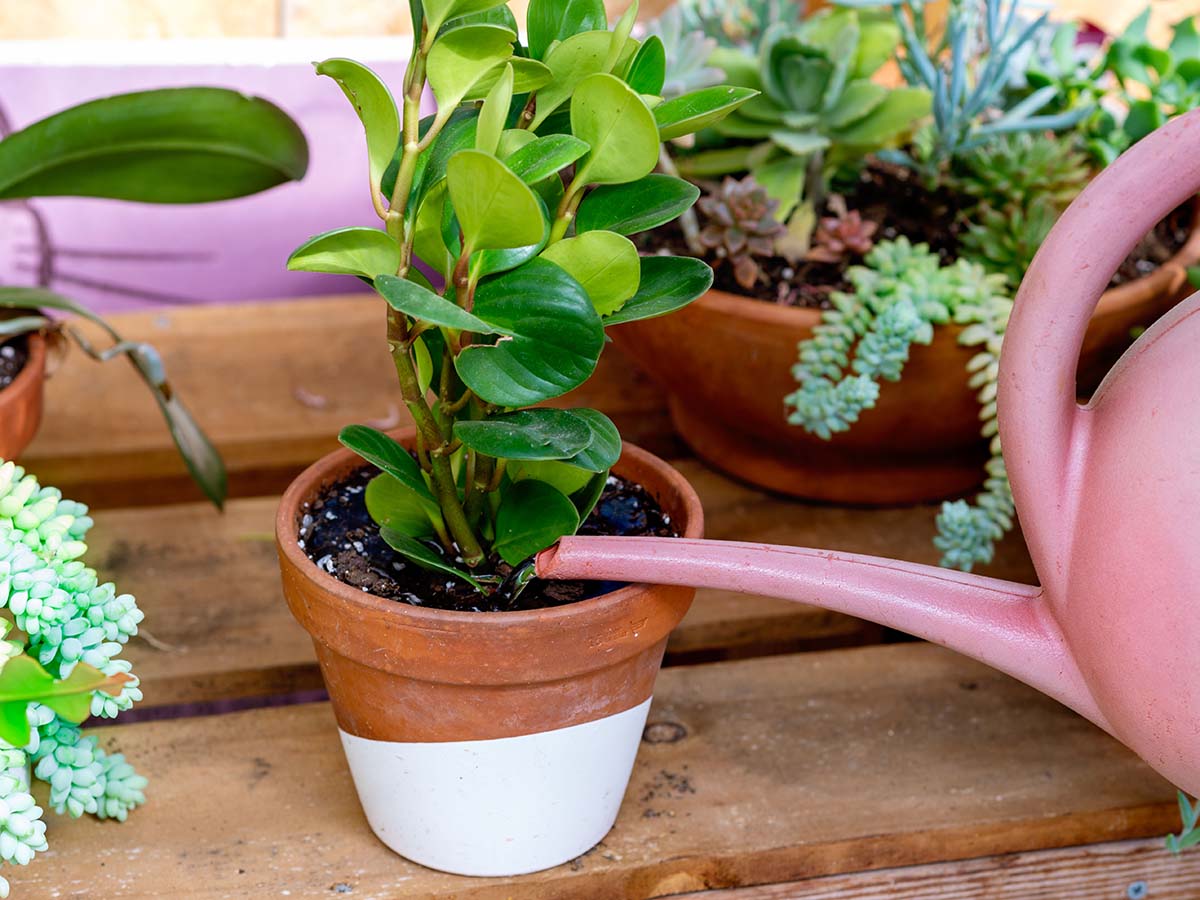

We may earn revenue from the products available on this page and participate in affiliate programs. Learn More ›
The most important difference between strong, healthy houseplants and weak, sickly ones is the care they receive. All plants have the same essential requirements for survival: sunlight, water, and nutrients. If they get these things in the right combination, they thrive; if they don’t they struggle and eventually die. Among these three basic needs, plant nutrients are the most frequently misunderstood, but getting it right doesn’t have to be complicated.
Most houseplants thrive on regular feedings with a high-quality, general-purpose fertilizer. The best fertilizer for indoor plants is one that provides a balance of the essential plant nutrients nitrogen (N), phosphorus (P), and potassium (K). Products that are most convenient to use and store are preferable because they make the chore less tedious. Although plants respond equally as well to both conventional and organic fertilizers, I prefer organics simply because of the way they work within the ecosystem of plant roots and potting soil (more on that later).
After testing nine popular houseplant plant fertilizers on 45 potted plants for 4 weeks, I chose Espoma organic concentrated indoor plant food as the best overall. Espoma is a family-owned company that has been making organic fertilizers since 1929. The liquid concentrate that I tested is just one of the company’s more than 70 organic products. In the review ahead, I’ll share my experience using the product, how my plants responded, and why I think it’s a great option for maintaining most indoor plants.
Espoma Organic Indoor Plant Food: At a Glance
Rating: 8.6/10

PROS
- Balanced NPK formula in an easy-to-mix, easy-to-apply, concentrated liquid form
- Includes humic acid and beneficial microbes that maximize fertilizer efficiency and benefit overall plant health
- Compact size and sturdy bottle make handling and storage easier and safer
Budget-friendly; one of the most affordable organic fertilizers available
CONS
- Requires frequent applications—twice a month for best results
- The small size is less efficient for maintaining large plant collections, and larger packages are not available
Get the Espoma fertilizer for indoor plants at:
What is Espoma organic indoor plant food?
Espoma organic indoor plant food is a concentrated liquid fertilizer that must be diluted with water before application. The 2-2-2 NPK analysis shown on the label means that, in its concentrated form, it contains 2 percent each of nitrogen, phosphorus, and potassium by weight. The nutrients are derived from hydrolyzed poultry manure, hydrolyzed soy protein, hydrolyzed fish protein, bone meal, and kelp extract.
Other ingredients make these ingredients work efficiently as plant food. Beneficial microbes in the formula consume the plant food ingredients in their minimally processed form and release them in a form usable by the plant. A small amount of the sugars dextrose, sucrose, and maltodextrin balance the microbes’ diet. The plant food is also fortified with humic acid, a naturally occurring substance in soil that regulates pH, increases water retention, and promotes nutrient uptake by plants. These ingredients create a living ecosystem in the plant root zone that is more like natural soil, instead of an inert substrate.

Is Espoma fertilizer for indoor plants easy to use?
Plants should be fed every 2 to 4 weeks, according to the directions. Following the package instructions, I mixed 2 teaspoons of the Espoma liquid fertilizer per 1 quart of water and used the solution to saturate my plants’ soil. The bottle cap is designed to work as a measurer for the concentrate. It is much like a scaled-down liquid laundry detergent cap. The design worked well, and it forced the residue to drain back inside the bottle rather than running down the outside.
The concentrated fertilizer had an aroma, but it was not overwhelming. Once it was diluted with water, the smell dissipated entirely. There was no lingering smell around the plants or the empty watering can after feeding.
How well does Espoma fertilizer nourish houseplants?
When properly applied to healthy plants that are growing in favorable light, moisture, and temperature, this fertilizer should support an overall healthy appearance and consistent growth. Following the recommended 2-week feeding interval, I fertilized my plants on days 1, 14, and 28 of testing, and monitored them for changes in foliage color as well as bud and leaf growth. I also watched out for any negative effects like leaf drop, rank growth, or infestation by insects or disease.
Starting with healthy, semi-dormant plants, I was pleased to watch them gently “wake up.” The color became deeper as new buds began to form by mid-month, and healthy new leaves emerged by the end of the testing program. I saw no symptoms of excessive growth, fertilizer burn, or plant stress.

Is Espoma organic indoor plant food right for you and your plants?
This fertilizer may not be the right choice for every gardener or plant. As a balanced plant food delivering equal amounts of NPK, it’s not the best choice for some flowering plants, fruiting plants, and other specialty plants that require higher levels of a certain ingredient. Also, the product is only available in an 8-ounce bottle, which may not be ideal for those with larger plant collections.
But I had really good results feeding Espoma indoor organic plant food to a variety of foliage houseplants, including pothos, philodendron, ficus, spathiphyllum, and others. The product came in a compact, durable bottle that was easy to store, easy to mix, and easy to use, and my plants looked great with regular use. As an all-purpose fertilizer for most houseplants, it’s a great choice.
Where to Buy the Espoma Organic Indoor Plant Food
Get the Espoma fertilizer for indoor plants at:
Meet the Tester
Mark Wolfe is a writer and product tester with a background in the nursery and landscaping industry. For more than 20 years he mowed, edged, planted, pruned, cultivated, irrigated, and renovated beautiful landscapes. Now he tests and writes reviews about the latest outdoor power equipment, hand tools, lawn-care products, and other outdoor-living goods.
